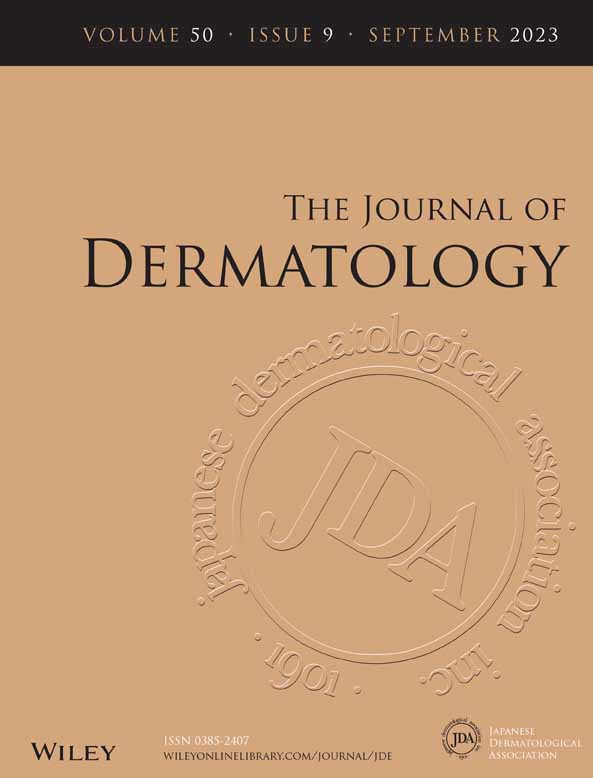A case of bullous pemphigoid developing under treatment with benralizumab for bronchial asthma
Abstract
Bullous pemphigoid (BP) is an autoimmune disease characterized by itchy erythema and tense blisters on the whole body. Recent reports have unveiled the pathogenic roles of eosinophils in BP (e.g., dermal-epidermal separation, generation of pruritus). Thus, eosinophils are considered a therapeutic target. Benralizumab is an anti-IL-5 receptor alpha (IL-5Rα) monoclonal antibody (mAb) that is widely used to treat severe eosinophilic asthma. By affecting IL-5Rα, benralizumab depletes eosinophils and basophils due to apoptosis through antibody-dependent cell-mediated cytotoxicity. The efficacies of benralizumab and other biologics, including bertilimumab (anti-eotaxin-1 mAb) and mepolizumab (anti-IL-5 mAb), were evaluated in several clinical trials. Also, reslizumab, an anti-IL-5 mAb, was reported as a successful treatment option in a case of BP. We present a case of severe asthma treated with benralizumab at 8-week intervals for 3 years before BP developed. Histologically, subepidermal blisters without eosinophilic infiltration were observed. Methylprednisolone pulse therapy followed by 40 mg/day (1 mg/kg/day) of oral prednisolone (PSL) was initiated, but the skin lesions worsened. Additional intravenous immunoglobulin and oral azathioprine enabled the oral PSL to be tapered. The benralizumab was discontinued after the onset of BP because the asthma did not worsen. To the best of our knowledge, there have been no reports of BP developing during anti-eosinophil therapy. BP may occur paradoxically via various pathways during treatment with drugs that are typically effective against BP.
CONFLICT OF INTEREST STATEMENT
None declared.




